Colloquia for Spring 2021
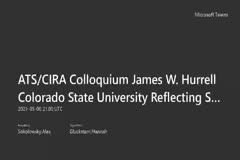
Reflecting Sunlight: Solar Geoengineering to Cool a Warming Planet
May 06, 2021
James Hurrell, Colorado State University
Hosted by -
Climate change is occurring and its impacts on ecosystems, humans, and the economy are growing. Yet, global efforts to reduce carbon dioxide emissions into the atmosphere are falling far short of what is necessary to avoid the worst impacts of climate change. It is within this context that the concept of Climate Intervention (CI) is being considered. Attempts to moderate anthropogenic warming…
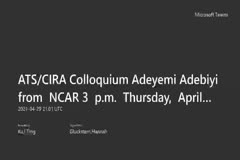
How much solar radiation does atmospheric mineral dust absorb, and how much do climate models simulate?
April 29, 2021
Adeyemi Adebiyi, University of California, Los Angeles
Hosted by Sonia Kreidenweis and Paul DeMott
Mineral dust particles account for approximately a third of the shortwave radiation scattered and absorbed by all aerosols in the atmosphere. As such, they have substantial radiative impacts on the Earth’s climate system. But despite their radiative impacts, the amount of shortwave radiation absorbed by atmospheric dust remains largely unclear. This is because knowledge of dust absorption…
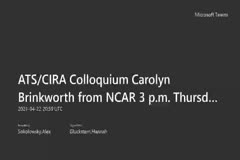
Weaving DEI into the fabric of science: culture change at UCAR/NCAR
April 22, 2021
Carolyn Brinkworth
Hosted by James Hurrell
When I joined UCAR/NCAR in 2014, the organization faced major diversity and inclusion challenges. While DEI was discussed frequently, organized and concerted action to address it was mainly focused on externally-facing education and outreach programs. Now, UCAR/NCAR has a DEI strategic plan, every lab/department has a DEI implementation plan, we have a DEI training program proven to increase…
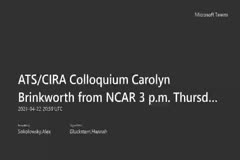
The Science of the Night—Shedding Light on the Nocturnal Environment with the VIIRS Day/Night Band
April 09, 2021
Steven D. Miller, Cooperative Institute for Research in the Atmosphere
Hosted by Peter Jan van Leeuwen
Daytime imagery of reflected sunlight in the visible-light (VIS) portion of the electromagnetic spectrum has been a staple of Earth-viewing radiometers since the advent of environmental satellites, first launched in the early 1960s. At night, and in the absence of sunlight, these traditional radiometers measure only the infrared (IR) emissions of Earth and its atmosphere. While IR observations…
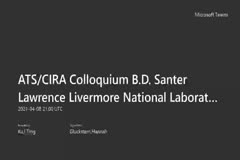
Fingerprinting the Climate System
April 08, 2021
B.D. Santer from Lawrence Livermore National Laboratory
Hosted by A.R. Ravishankara
Fingerprint research seeks to improve understanding of the nature and causes of climate change. The basic strategy is to search for model-predicted patterns of climate change (“fingerprints”) in observed climate records. Such studies exploit the fact that different factors affecting climate have different characteristic signatures. These unique attributes are clearer in detailed patterns of…
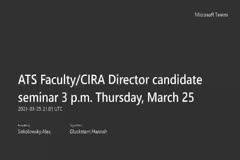
Understanding the ingredients for a global convective hotspot in Subtropical South America: RELAMPAGO-CACTI
March 25, 2021
Steve Nesbitt from the University of Illinois at Urbana-Champaign
Hosted by Peter Jan van Leeuwen
Satellite observations and results from field campaigns have elucidated key morphological characteristics and processes in convective storms that produce the majority of global precipitation and hazardous weather. Errors in models’ representation of the occurrence, timing, and intensity of these systems leading to local and regional biases in temperature and rainfall in weather and climate…
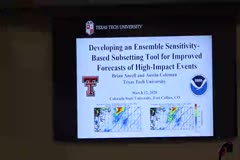
Developing an Ensemble Sensitivity-Based Subsetting Tool for Improved Forecasts of High-Impact Events
March 12, 2021
Brian Ancell
Hosted by Russ Schumacher
Modern computational resources now allow convection-permitting ensemble forecasts in real time. These forecasts compose massive amounts of data containing information about the predictability of specific atmospheric features, and techniques exploiting such information might provide improved prediction of high-impact events. One such technique is known as ensemble sensitivity, which extracts…
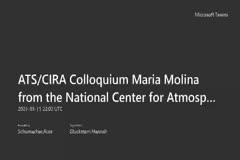
Time Series Analyses across Weather and Climate Scales
March 11, 2021
Maria Molina from the National Center for Atmospheric Research
Hosted by Russ Schumacher
A time series is data ordered sequentially, which can be used to describe the internal structure of an atmospheric or climate variable as it varies over time. Signal processing and machine learning techniques can be used to describe features within the data and predict what the time series may look like at a future time. Here we leveraged time series analysis methods for two projects of…
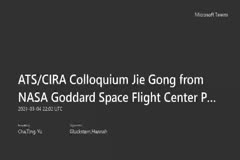
Polarization Difference - the scientific story behind one variable and its practical applications
March 04, 2021
Jie Gong from NASA Goddard Space Flight Center
Hosted by Christine Chiu
Cloud ice and snow microphysical characteristics play an important role in determining cloud radiative effect. They are also closely connected to the details of surface precipitation characteristics. Ice orientation is one microphysical property that is traditionally believed to have trivial impact on the weather systems/climate, and it is hard to measure from space. In this presentation, I…
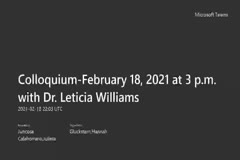
Applying a multicultural mentoring model to broaden participation in atmospheric sciences: Best communication practices for mentoring underrepresented students
February 18, 2021
Leticia Williams from Howard University NOAA Center for Atmospheric Sciences and Meteorology
Hosted by Leah Grant (on behalf of the Diversity, Equity and Inclusion Committee) and Christine Chiu
Mentoring has become a leading intervention strategy to increase diversity of underrepresented students (e.g., women, Black, Latinx, Indigenous) in science, technology, engineering, and mathematics (STEM). The ability to communicate with male or female protégés from various cultures is essential to STEM mentors’ ability to support and advise Asian, Black, Indigenous, and Latinx atmospheric…
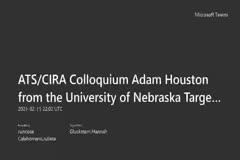
Targeted Observation by Radars and UAS of Supercells (TORUS)
February 11, 2021
Adam Houston from the University of Nebraska
Hosted by Russ Schumacher
Targeted Observation by Radars and UAS of Supercells (TORUS) aims to improve the conceptual model of supercells by explicating the relationship of storm-generated boundaries and coherent structures within storm outflow to the generation/amplification of near-surface rotation. New insight will be enabled through coordinated and tightly-focused deployments of new and established remote and in…
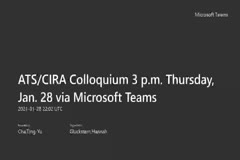
Understanding Tropical Convection and its Mesoscale Organization: The Vital Role of 50 years of Field Campaigns
January 28, 2021
Edward Zipser from the University of Utah
Hosted by Steven Rutledge
Beginning in the 1960s, with the encouragement of President John F. Kennedy for the U.S. taking a leadership role in Science (also leading to the moon landing in the same decade), the Charney Report highlighted the need to understand and parameterize tropical convection if global models were to approach their potential of useful 1-2-week weather prediction. Stimulated by Verner Suomi promising…
